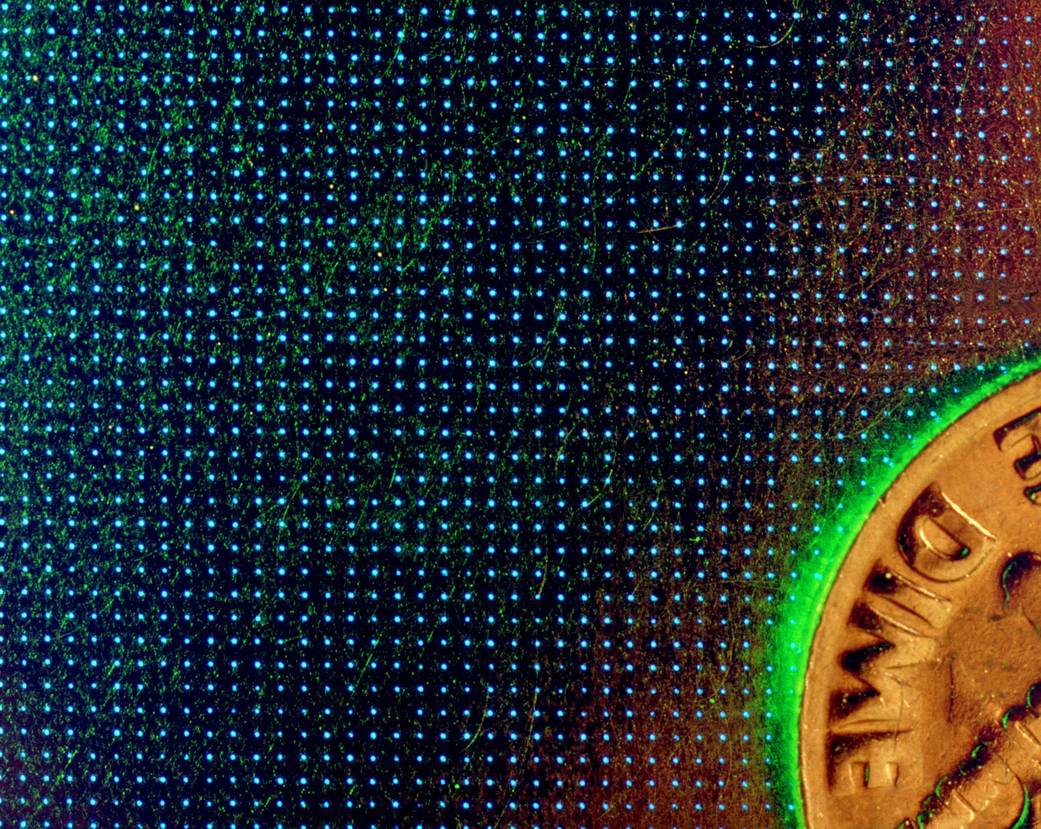EC95-43286-1
This photograph of a test panel similar to the one attached to the surface of an F-16XL research aircraft’s left wing at NASA’s Dryden Flight Research Center, Edwards, CA, shows the size of the more than 10 million laser-cut holes in the panel, called a glove, as compared with a dime. Below the titanium panel into which holes are cut is a suction system linked to a compressor. During research flights with the modified, delta-winged F-16XL, the suction system pulled a small part of the boundary layer of air through the glove’s porous surface to expand the extent of smooth (laminar) flow.
Researchers believe that laminar flow conditions can reduce aerodynamic drag (friction) and contribute to reduced operating costs by improving fuel consumption and lowering aircraft weight.
This Supersonic Laminar Flow Control (SLFC) experiment represents a collaborative effort between NASA and aerospace industry (specifically Boeing, Rockwell, and McDonnell Douglas), with Boeing assembling the panel and McDonnell Douglas designing the suction system.Oct. 1995NASA Photo› F-16XL-2 Project Description
1 min read

























